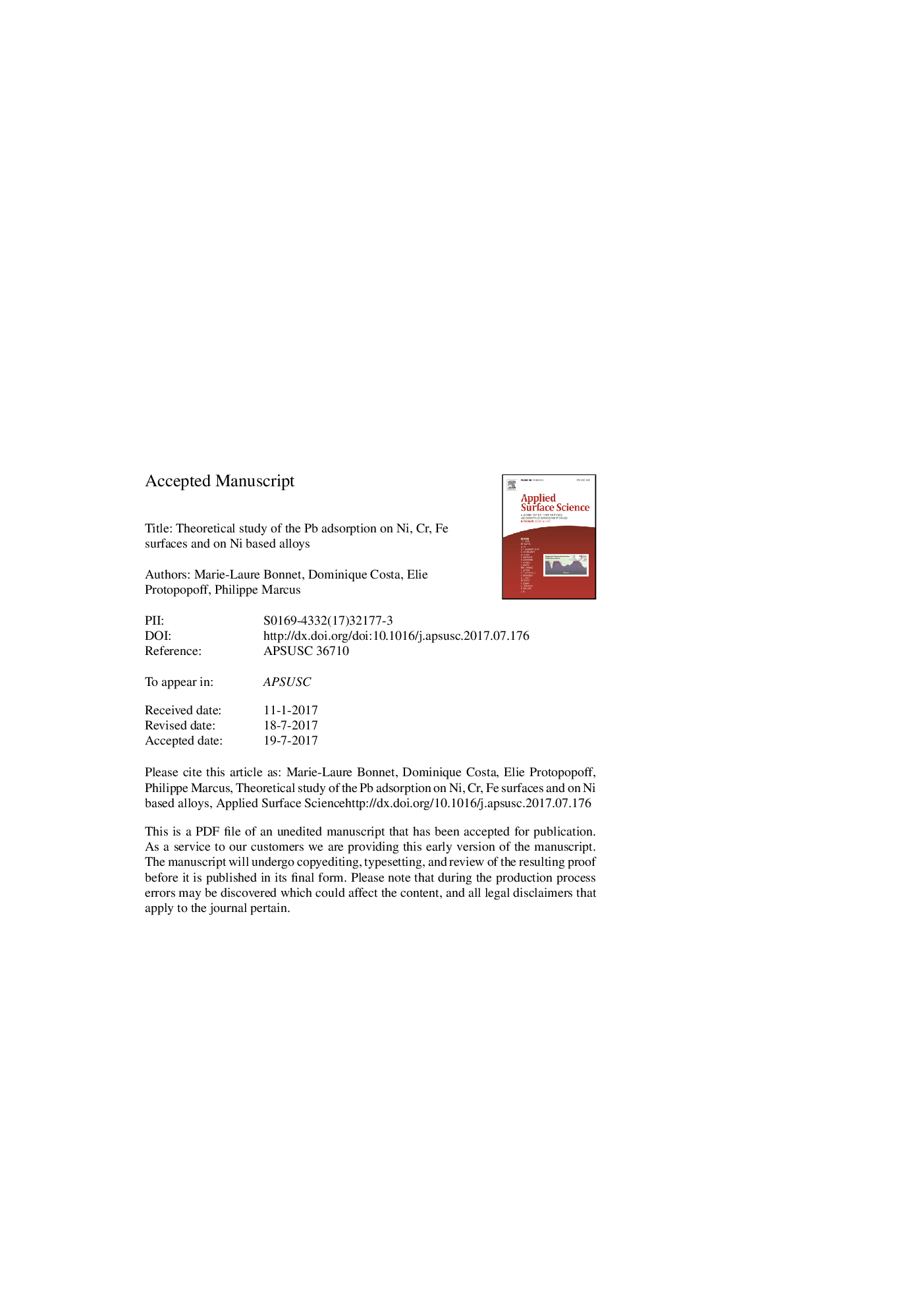| Article ID | Journal | Published Year | Pages | File Type |
|---|---|---|---|---|
| 5349573 | Applied Surface Science | 2017 | 21 Pages |
Abstract
Adsorption of Pb atoms on the Ni(111), Ni(100), Fe(110), and Cr(110) metallic surfaces was studied theoretically within an ab initio density functional theory approach (DFT). (â3 Ã â3)R30° super structures for Ni(111), and (2 Ã 2) for the other surfaces, corresponding to the saturation state, were considered. The preferred adsorption sites are found to be ternary sites for Ni(111), Fe(110), Cr(110) and quaternary sites for Ni(100). Adsorption on Fe and Cr is less exothermic than on Ni, by 0.16 and 0.33 eV/mol respectively. Adsorption on model surfaces of Ni based alloys was also investigated. It was found that the energy of adsorption depends mostly on the chemical composition of the ternary site, and can be described by a linear combination of the energies of adsorption on the pure metals. The nature of the second nearest neighbour of the adsorbed Pb atom has no significant influence on the adsorption energy. Average energies of adsorption were calculated in two cases: the limit of low coverage, and the saturation. The energies of adsorption of Pb at saturation on nickel base alloy surface representative of alloy 600 (Ni-15Cr-8Fe) and alloy 690 (Ni-30Cr-8Fe) were calculated to be 0.07 and 0.11 eV lower than on pure Ni respectively.
Related Topics
Physical Sciences and Engineering
Chemistry
Physical and Theoretical Chemistry
Authors
Marie-Laure Bonnet, Dominique Costa, Elie Protopopoff, Philippe Marcus,
